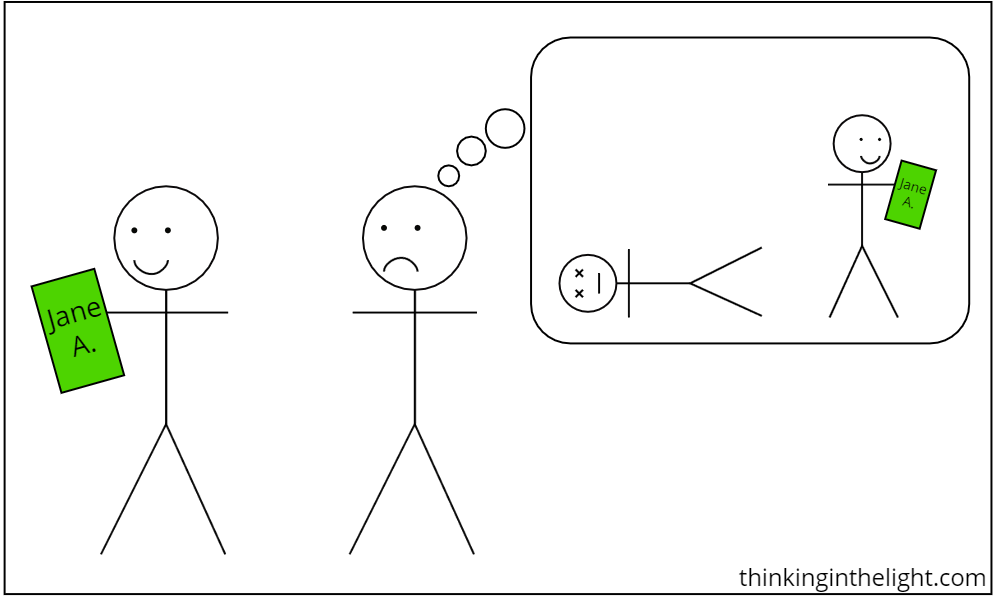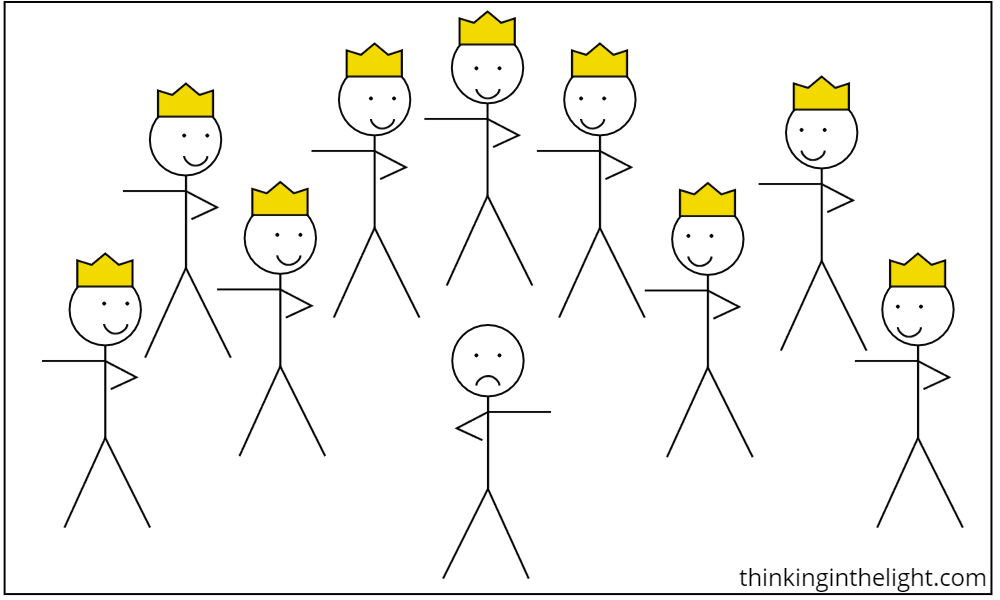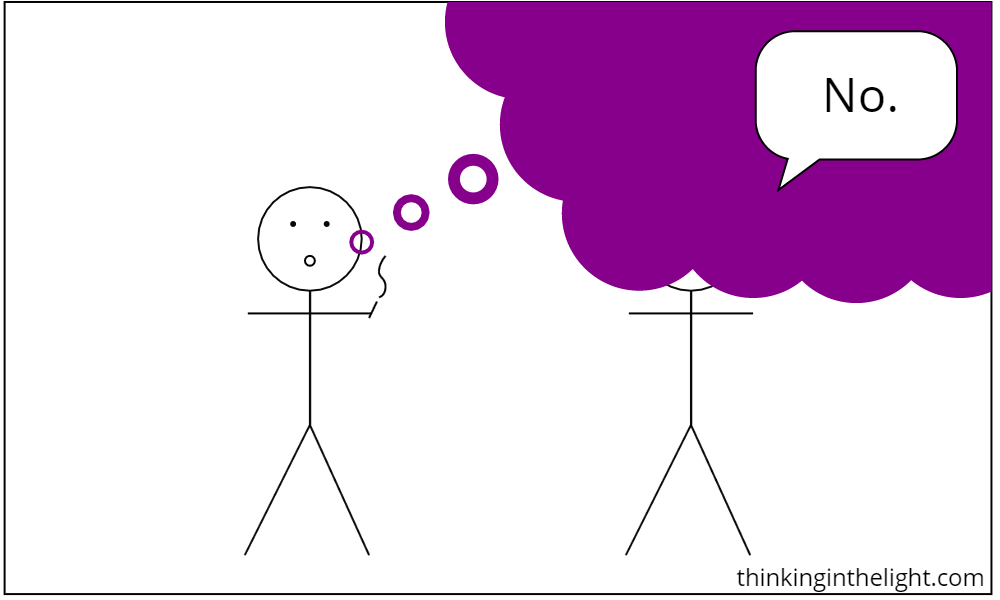Part 1 of the series I just want what I want! (Thinking about Desires)
Mill and the Harm Principle
I scream, you scream, we all scream when we don’t get what we want. Little kids will do so out loud, but even well-behaved adults often throw fits internally. We all want stuff—from love, fame, food, and power, to meaning, sex, world peace, and first edition copies of Pride and Prejudice. And what we want most of all is for other people not to get in the way of what we want.

But other people do get in my way. We have conflicts in desires all the time. One way to think about desires, then, is to see desires themselves as unproblematic. The problem is the conflicts.
Now, I can have conflicts between my own desires, such as when I want to eat cheesecake for breakfast and I also want the physique of The Mighty Thor. These conflicts are relatively easy to solve, since I just have to prioritize for myself. (I have the physique of a cheesecake-eater.) Conflicts between people are more complicated, and in this post I am going to focus on a particular instance of this conflict: when an individual in the minority has desires that conflict with those of the rest of society.
There are many ways that this sort of conflict can take place. A Christian may be forbidden from practicing her religion in an Islamic or communist society. A marijuana enthusiast may be prevented from smoking in a conservative one. In some societies a polygamist may be stopped from having multiple wives, or an atheist may be disallowed from teaching her views.
In its most extreme form, this conflict goes by the name “the tyranny of the majority,” because the desires of the members of a society can act like an oppressive tyrant upon a dissenting individual in the minority.

This tyranny is the focus of On Liberty by John Stuart Mill, a British philosopher from the 1800s. He wants to explain why the tyranny of the majority is wrong. Specifically, what explains a legitimate exercise of power by a society over an individual, and when is such an exercise illegitimate? When should a person be able to express and live out their desires, and when may a society prevent the person from doing so? Mill’s answer is to make explicit a common impulse: acting on a desire is wrong when it harms someone else.
Suppose that Oliver is training for the Olympics, and he wants to practice throwing his javelin. He wants to get in as much practice as he can, so he goes to the closest field and starts immediately. He makes his first throw, a beautiful arc through the air that might be a personal best. Unfortunately, today is the town’s Picnic in the Park, and Oliver’s javelin cuts Mary’s lunch short.

It was a problem for Oliver to act on his desire to practice immediately, because his action resulted in harm to someone else. On the flipside, it seems that Oliver should be allowed to follow his desires if no harm results. If he had found an empty field, it would not have been problematic. This situation is straightforward, since no one approves of spontaneous impalement and Oliver’s problem is easily solved—he just needs to find another place to practice (after he gets out of jail)—but the issue of conflicting desires can be much more complex. When a person has beliefs that are at odds with the dominant views of society, or when they want to do something the rest of society abhors, it is not as simple as picking a better location.
Nevertheless, Mill sees the solution as being the same for these more complex situations. He takes the impulse described about and puts it forward as the harm principle:
The only purpose for which power can be rightfully exercised over any member of a civilized community, against his will, is to prevent harm to others. His own good, either physical or moral, is not a sufficient warrant.
On Liberty, p. 9
That is, before taking into account the impact on others, an individual must always be allowed to act on their desires if they chose to do so. It doesn’t matter how much a society dislikes what the person does or whether the society thinks another course of action would be more prudent. However, once the individual’s action starts affecting others in such a way that those others are harmed, then society may step in and prohibit the action. For example, if I desire to smoke cigarettes, I must be allowed to do so, even if it ruins my health or if others find the habit disgusting. But society may stop me from smoking indoors and harming others through secondhand smoke.

When addressing desires, the harm principle could be put into three statements:
1) If people’s desires do not conflict, the individual should be able to decide whether or not to gratify their desires. I may want to smoke and may choose either to do so or not to do so. Similarly, if there is a group that has a mutual desire—such as being in a fight club together—then they may choose whether or not to have this club, even if it results in physical harm to its members.
2) If people’s desires conflict, then we need to ask if both parties are actually concerned. I may want to be an atheist and you may be offended by this and want me to be a Muslim, but while the desires conflict, the action only concerns my life. On the other hand, if I want you to be my slave while you want to remain free, our desires also conflict, but in this case the action concerns you as well.
3) If people’s desires conflict and the issue concerns both parties, then a desire that harms the other may be prevented by society. Since the action of enslaving you would harm you, society can legitimately prevent me from gratifying my desire. Similarly, if I want to smoke and you don’t want me to, and my smoking causes harm to your health, then society may make me stop.
The harm principle often appears commonplace and obvious to contemporary Americans. “Follow your heart” and “You do you” are the advice given to individuals, and when these individuals come together, who is to criticize what is done by two consenting adults? At the same time, if a person’s actions are contributing to the oppression of someone else—if they are causing harm to them—then those actions are condemned.
And there is good reason for having the harm principle be a rule of thumb in a pluralistic society like America. If citizens have many different religions, worldviews, and priorities in life, then it makes sense to allow those citizens the freedom not to conform to the life-plans of others. If Jewish business owners close their stores on Saturdays, while Christian owners close their businesses on Sundays, this seems perfectly fine, even if it inconveniences some potential customers. A society also needs to do things like prevent those business owners from cheating their customers (or from murdering them), so making laws to prevent harm to citizens also makes sense.

However, for Mill the harm principle is not just a rule of thumb, but it is the principle for deciding conflicts. And it does not fare as well when it is the sole guidance for how a society deals with conflicting desires.
As stated previously, Mill’s goal is to prevent the tyranny of the majority. He recognizes that this tyranny is a problem because people tend to mistake their preferences for universal laws:
The practical principle which guides them to their opinions on the regulation of human conduct is the feeling in each person’s mind that everybody should be required to act as he, and those with whom he sympathizes, would like them to act. No one, indeed, acknowledges to himself that his standard of judgment is his own liking, but an opinion on a point of conduct, not supported by reasons, can only count as one person’s preference; and if the reasons, when given, are a mere appeal to a similar preference felt by other people, it is still only many people’s liking instead of one.
On Liberty, p. 5-6
Because people are so prone to see their own desires as the rules by which everyone must act, Mill wants to provide an impartial principle instead, supplying the reasoning that many people fail to give. The harm principle is designed to be this objective standard.
There is a question, however, as to whether it can support this weight and perform this role. The harm principle names the standard by which a society will judge what sorts of behaviors may be forbidden—those that harm—but it does not define what it is that qualifies as harmful. This will ultimately depend on the worldview of the person assessing the situation.
For example, the philosopher Socrates was sentenced to death in ancient Athens, because he taught beliefs about the gods that were different from those held by the Athenians. From their perspective, this was harmful to all the citizens, because in their view, the gods would punish communities that allowed disrespectful heretics (this is the notion of religious pollution). According to Socrates, however, a god would want people to be ethical and think about morality, so his inquiries do not harm the society, they actually benefit it. The difference in religious viewpoints led to a difference in what constitutes harm.
Or, as a more contemporary case, take a baker or florist who on religious grounds does not want to supply a cake or flowers for a same-sex wedding. Each side may very well view the harms differently. The couple may see themselves as being harmed when denied the cake, because they think their rights and dignity are being denied and devalued, while they may not see harm being done to the baker if she is forced to comply and go against her religious preferences. On the other hand, the baker may see herself as being harmed if she is forced to bake the cake, because she would be violating what she thinks God is requiring her to do, while she would not see harm coming to the couple, because they can get a cake elsewhere. In one worldview sexual identity trumps religious choice, while in the other obedience to God takes precedence over lifestyle wishes.
Ultimately, then, the harm principle fails as the sole means to decide disputes between desires. Conflicts in desires cannot be resolved without an appeal to an objective standard, to an idea of what we ought to do. When we think about desires, then, we must bring in the idea of morality, as I will discuss further in the next post.
Bibliography:
- John Stuart Mill. On Liberty. [1859.] Hackett Publishing Company 1978. (If you are interested in reading more about the harm principle, Mill gives a basic explanation of it and why it is needed in his introduction to On Liberty (chapter 1). For a more detailed discussion of it, with lots of examples, look at chapters 4 and 5. Mill is a clear and organized writer, but he was writing in the 1800s, so his vocabulary can be a bit difficult, and he really likes long sentences.)
